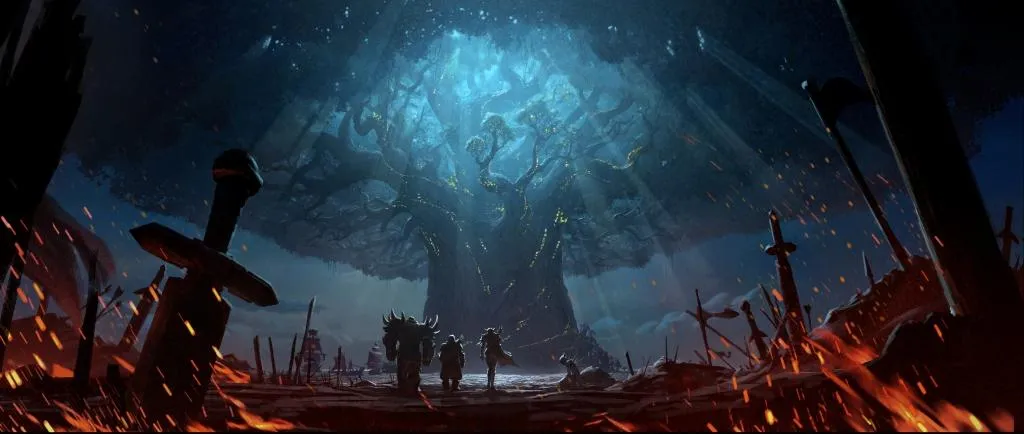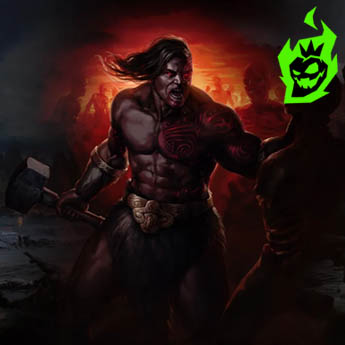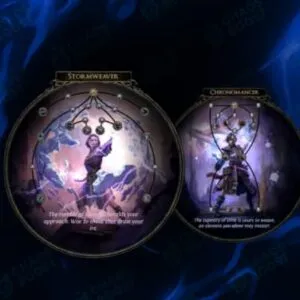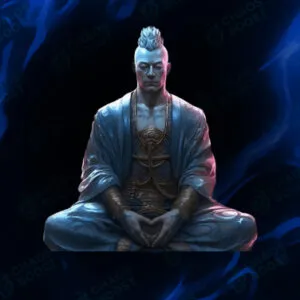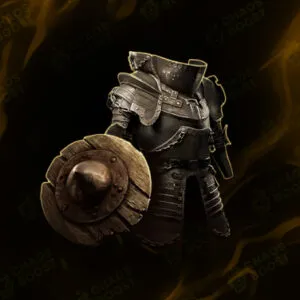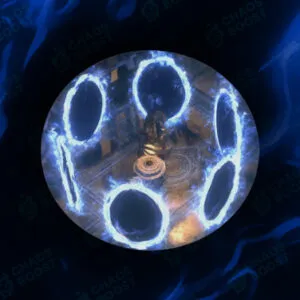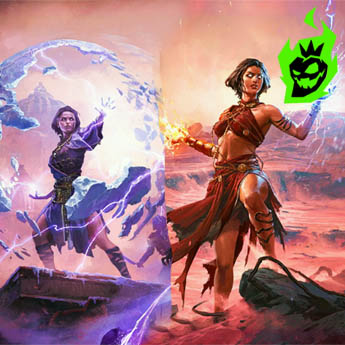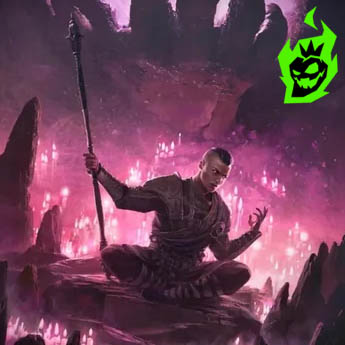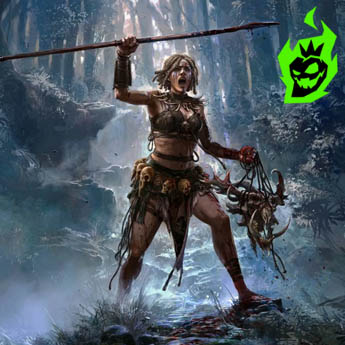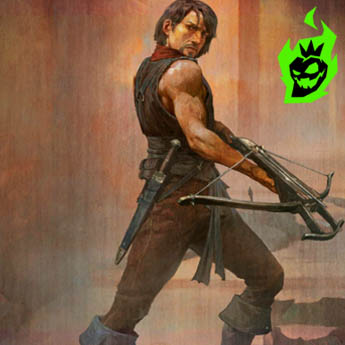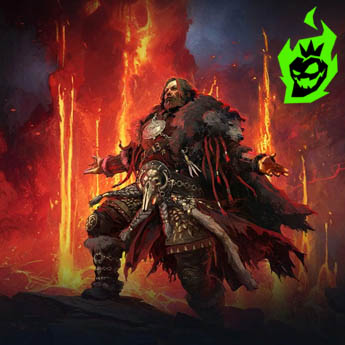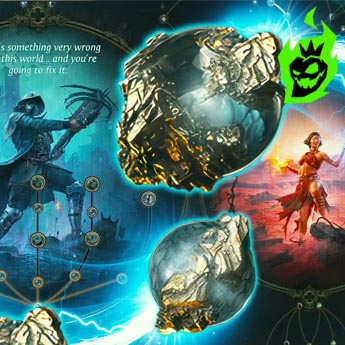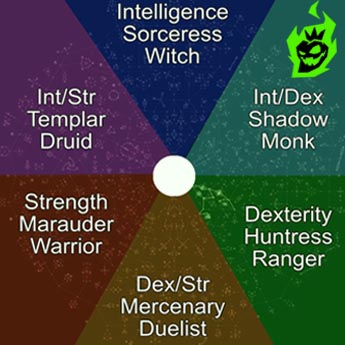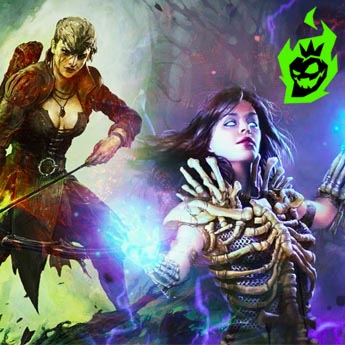PoE 2 New Future Classes
Path of Exile 2 is introducing a big change to the class system, going from 6 initial heroes to 12. Each archetype has its own identity based on weapon specialisation and stat allocation in the big passive skill tree. The early access period has shown the first 6 classes—Sorceress, Warrior, Ranger, Witch, Mercenary, Monk— and 6 more are coming. Among those 6, the Huntress is already in the roster, and she’s spearing people with her combat and dexterity based gameplay. As PoE 2 gets closer to release, we’ll see Druid, Templar, Duelist, Shadow and Marauder as well, each bringing new build diversity and skill gem synergies.
Overview of Path of Exile 2 Class System
Path of Exile 2 is building on the highly customisable foundation of the previous game, focusing on weapon based skill gems, spirit gems and complex passive paths. The class selection is about how strength, dexterity and intelligence are mixed, so each hero starts at a specific node group on the passive skill tree. The early access heroes—Sorceress, Warrior, Ranger, Witch, Mercenary, Monk—have shown the basic arcs, with Sorceress and Witch being different takes on intelligence for example. When all 12 are revealed, these branching paths will cover even more combat and support possibilities.
PoE 2 has a big passive tree with a central hub that connects to each class’s start node. The overall layout has nodes that reference class identities, like heavy armor and raw power for Warrior or airy wind spells for Monk. Ascendancy classes add another layer to this by giving special passives that strongly influence each hero’s playstyle. The final form of PoE 2 will have 3 ascendancies per class, for a total of 36 sub-classes that can generate countless character builds. Here is a table of the initial 6 classes in PoE 2, with their core stats and weapon focus:
| Class | Primary Stats | Weapon/Skill Specialty | Example Themes |
|---|---|---|---|
| Sorceress | Intelligence | Elemental Magic (Fire/Ice) | Long-range Spell Combos |
| Warrior | Strength | Mace, Heavy Slams | Physical Stuns, High Armor |
| Ranger | Dexterity | Bow, Rapid Shots | High Mobility, Volley Attacks |
| Witch | Intelligence | Occult Magic (Bone/Chaos) | Summons, Curses, Dark Spells |
| Mercenary | Strength/Dexterity | Crossbow, Hybrid Combat | Traps, Utility Shots, Medium Range |
| Monk | Dexterity/Intelligence | Staff, Wind Techniques | Agile Combos, Spiritual Waves |
The class system allows for freedom of choice by allowing any character to go into other areas of the passive skill tree. This means a Sorceress can add melee damage, or a Warrior can take curses and spells. This flexibility is what many players enjoy, and drives them to try new builds and ascendancies.
In summary, the Path of Exile 2 class system is unique with weapon specific skill gems, spirit gem synergy and the multi-layered passive skill tree. With all 12 classes eventually available, the roster will have a mix of new weapon archetypes, hybrid stat paths and new ascendancies. It’s a great environment for veterans who love theorycrafting and newcomers who want to create unique heroes.
Warrior and Marauder
Warrior is a physical powerhouse already in PoE 2 early access, centered around strength. This hero uses mace type weapons, slams and shockwaves to keep groups of monsters at bay. Crowd control and high armor is the Warrior’s way, with synergy points in the passive tree giving life, melee damage and stun duration. While the Warrior is most comfortable at close range, it can branch into hybrid by going through the multiple paths of the tree. Here is a table of the main differences between Warrior and Marauder, which will be coming in a future update:
| Aspect | Warrior | Marauder |
|---|---|---|
| Stat Emphasis | Strength | Strength |
| Core Weapon Focus | Mace | Axe |
| Archetype Flavor | Stuns, Controlled Slams | Frenzied Bleeds, Brutal Sweeps |
| Potential Ascendancy | Conqueror or Juggernaut (planned) | Berserker or Earthshaker (planned) |
| Defensive Approach | High Armor, Life, Block | High Life, Leech Effects, Rage Stacks |
The Warrior shows off its skills with area of effect knockdowns, slow but heavy hits and a tanky frontline presence. Items with high armor or increased armor and energy shield fit the Warrior’s theme. Players expect the Marauder to go full savage with axes, focusing on bleed effects, life regeneration and maybe rage mechanics. Passive skill clusters for two handed axe damage, increased leech and unstoppable offence will shape the Marauder’s identity.
Final thoughts on these strength based behemoths revolve around how their melee approaches will combine with PoE 2’s new spirit gem system. The Warrior is already known for synergy with elemental infused slam attacks and big maces. When Marauder comes in with axes, the resulting heavy hitting builds will further deepen the game’s meta, encouraging builds like bleed tank hybrids or unstoppable stun based slayers.
Sorceress and Witch
Sorceress and Witch are two different paths from the same intelligence based node on the passive skill tree. Sorceress is known for her pure elemental approach, using fire, ice and lightning to dominate at range. Witch channels darker forces through bone magic, curses and chaos damage, forging an identity that resonates with undead summons and sinister auras. Both heroes benefit from high spell damage, critical strike multipliers and energy shield nodes but their flavor and skill gems take them in different directions. Here is a quick list of the Sorceress and Witch’s unique features:
- Sorceress Themes: Fireballs, Icicles, Lightning Storms, Spell Crit
- Witch Themes: Bone Lances, Curses, Chaos Clouds, Summoned Minions
- Shared Stats: Intelligence, Mana, Energy Shield
- Passive Tree Positions: Northeastern intelligence nodes plus unique spell clusters
- Likely Ascendancies: Elementalist or Flamecaller for Sorceress, Necromancer or Ritualist for Witch
Both classes excel at controlling engagements from range, but in different ways. For example Sorceress skills are about large area of effect spells, chain lightning arcs or chill effects. Witch skills are about creeping curses and minion based fights that put skeletons, specters and bone constructs on the frontline. Beyond raw damage each hero can manipulate defensive layers through intangible illusions or devouring energy shield nodes that increase survivability.
In conclusion, PoE 2’s intelligence based spellcasters are the favorite among those who want to deal massive magical damage and creative synergy with curses, summons or elemental combos. As the game matures Sorceress and Witch will get additional ascendancies that will revolve around advanced frost bombs, swirling chaos illusions or unstoppable golem armies. The fact that they share a part of the skill tree but diverge into different spell categories shows the game’s overall design philosophy – allowing classes to have a unique identity while tapping into universal passives in flexible ways.
Monk and Shadow
Monk is already in early access and combines dexterity and intelligence through fluid combat with a staff, wind based attacks and footwork. Shadow is on the horizon and will occupy the same dex-int niche but will use daggers, poison, illusions and teleportation. Both heroes are agile but each has a different approach to resource management and offence, showing the diversity that dual attribute classes bring to PoE 2. Before we dive deeper here is a table of Monk’s known traits and Shadow’s expected style:
| Attribute | Monk | Shadow |
|---|---|---|
| Stats | Dexterity/Intelligence | Dexterity/Intelligence |
| Weapon Specialization | Staff | Dagger |
| Skill Gem Themes | Wind Gusts, Spiritual Waves | Teleports, Poison Shivs, Dark Exploits |
| Defensive Options | Evasion, Subtle Spell Shields | Evasion, Temporary Cloaks |
| Example Ascendancies | Enlightened Striker (planned) | Assassin or Nightfall (planned) |
Monk’s staff based combos revolve around generating wind tunnels and unleashing fast multi hit attacks. High mobility is shown through small leaps, staff spin moves and manipulation of enemy positioning. Spirit gems tied to the Monk’s arsenal often grant layered synergy between elemental bursts and physical combos, allowing for fast paced gameplay that rewards timing.
On the other hand the Shadow will likely show advanced stealth, illusions and high critical strike chance. Dagger stabs, backstabs and cunning chaos spells will be integrated, so a deadly combination of single target damage and positioning. This will be about carefully stacking poison, applying curses or sneaking behind enemy lines to get critical hits before disappearing into a swirl of shadows.
The Monk and Shadow contrast shows how PoE 2’s dex-int classes are about speed, trickery and creativity. Whether harnessing elemental wind strikes or lurking in the darkness with poison-laced daggers, both demonstrate the strong momentum behind the game’s dual attribute heroes.
Ranger and Huntress
Ranger has captured the hearts of archers everywhere with its dexterity focus, bow based skills and high velocity firing solutions. Early access allows players to leap shot across the arena, volley arrows and weave in specialized passive nodes for high damage. Huntress, originally announced as a future class, is now live and wields a spear for dexterity based melee. Both are about quick repositioning and targeted strikes but use different weapon techniques.
- Ranger: Bows, agile movement, arrow based combos, synergy with evasion passives.
- Huntress: Spears, multi-thrust combos, possible bleeds or poison effects, dexterity.
- Common Passive Branch: Southeastern dexterity nodes, faster attacks and better evade rates.
- Example Ascendancies: Ranger might become a Sharpshooter or a Volley Queen, Huntress might become a Spearmaster or a Beast Warden.
- Gameplay Contrast: Pure ranged damage from Ranger; spear based mid range control from Huntress.
Huntress has already shown a new dimension of dexterity gameplay by combining precise spear thrusts with cunning traps or crowd control. Some builds will revolve around spin attacks that create wind funnels or poison laced stabs for consistent damage over time. The synergy with dex based passives is very flexible, allowing players to switch from glass cannon gameplay to tankier or more evasive builds.
In conclusion both Ranger and Huntress show the breadth of dexterity in PoE 2. Bows are a reliable option for those who want to attack from a distance, while the Huntress spear kit is for those who want a more physical melee style. The shared dexterity path means items and skill gems will cross over between the two, so endless experimentation.
Mercenary and Duelist
Mercenary is already in early access and combines strength and dexterity to excel at medium range combat with a crossbow. Utility shots, mechanical traps and balanced defenses define the Mercenary’s playstyle. Duelist, the planned counterpart, will bring a sword based approach to the same stat mix but with more emphasis on melee speed and footwork. Here is a table comparing Mercenary and Duelist:
| Trait | Mercenary | Duelist |
|---|---|---|
| Primary Stat Mix | Strength/Dexterity | Strength/Dexterity |
| Weapon Specialty | Crossbow, Hybrid Range | Sword, Rapid Melee |
| Signature Feature | Lockdown Traps, Power Bolts | Flicker Slashes, Bleed Mechanics |
| Example Ascendancy | Warlord or Sniper (planned) | Gladiator or Blade Tempest (planned) |
| Typical Strategies | Mix of Physical Range & Support | High-DPS Melee Rush, Mobility Skills |
Mercenary passives focus on moderate strength based defenses and dexterity for faster reloads, better traps and precise shots. The class is often seen dropping mechanical contraptions that root enemies in place and then crossbow bolts. This is about controlling the pace of the fight, whether single target or wave clearing crowd control.
Duelist on the other hand will be about swords that unleash fast melee combos. Bleed oriented strikes, flicker like teleports and whirling combos appear frequently in concept teasers and discussions. With the same strength and dexterity mix Duelist will be good at close combat and have some mobility for repositioning. This synergy fits well with shared passives that amplify physical damage, increase melee critical chance or add layering in the form of block or evasion.
Together Mercenary and Duelist show how PoE 2 will offer different ways to play str-dex hybrids. Whether using a crossbow from short range or lunging in with sword slashes both classes keep combat dynamic. Upcoming ascendancies will add more to these possibilities, ways to manipulate bleeds, critical hits or crossbow traps on a larger scale.
Templar and Druid
Templar and Druid are one of the most interesting pairs in PoE 2, combining intelligence with strength (for Templar) and intelligence with strength or nature based magic (for Druid, depending on final development details). Templar has been a beloved archetype in the original PoE, known for holy magic, flail based attacks and aura support. Druid was recently teased in official channels and harnesses shape-shifting, primal spells and earth themed abilities. Here is a table comparing Templar and Druid:
| Aspect | Templar | Druid |
|---|---|---|
| Stats | Strength/Intelligence | Strength/Intelligence (with Nature Spells) |
| Weapon Focus | Flail or Scepter | Primal Magic, Animal Forms |
| Gameplay Elements | Holy Lightning, Burning Ground, Auras | Shape-shifting, Volcano Eruptions, Earth Magic |
| Ascendancy Concepts | Paladin or Archon (planned) | Earthwarden or Shapeshifter (planned) |
| Unique Mechanics | Aura synergy, Holy Storms | Bear Form, Enhanced Summons |
Templar often has a holy theme, with flails or scepters that deal massive damage and holy lightning or fire. Support skills might include auras for nearby allies while passives in the strength-int area of the tree give armor, life and elemental damage scaling. In group play Templar stands out by combining high damage with supportive buffs like area of effect regenerations.
Druid introduces the thrill of shape-shifting, allowing the player to transform into a bear or other forms while summoning storms, earthquakes or lava streams. According to early footage the Druid can switch forms mid fight, linking primal spells with bestial attacks. For example, dropping a volcano beneath enemies, then pouncing as a bear to make that volcano erupt more violently. These primal synergies with the environment offer new gameplay loops that are different from typical caster or melee templates.
Final thoughts on Templar and Druid show how this duo expands PoE 2’s stat hybrids and mechanical variety. Templar merges holy wrath and buffs, Druid roars with natural power, bridging the gap between savage animal transformations and powerful spellcasting. Both enrich the game’s possibilities for highly creative builds, shining a light on the synergy between mind, body and the raw elemental forces of Wraeclast.
Ascendancies and Spirit Gem Synergy
Ascendancies have been a core part of the PoE series, featuring unique sub-class passives that push the main class in specific directions. PoE 2 will give each of the 12 classes 3 ascendancy options, for a total of 36 sub-classes. Each ascendancy tree has 6-8 powerful nodes that shape the character’s endgame progression. Spirit gems complement these choices by adding permanent upgrades that can be accessed once the hero reaches certain levels, more ways to refine the hero’s primary playstyle. Here is a short list of how ascendancies and spirit gems work together:
- Class Identity: Ascendancies make each class stand out in the late game, whether by doubling down on elemental damage or stealth.
- Permanent Upgrades: Spirit gems unlock advanced skill effects or improved resource management, on top of ascendancy bonuses.
- Weapon-Specific Synergy: Crossbow, spear, mace, dagger, staff and other specialized gems work with certain ascendancies for maximum effect.
- Detailed Progression: Characters earn ascendancy points through special tasks, spirit gems through experience.
- Combinational Builds: Smart use of ascendancies and spirit gems yields endless build possibilities, especially when hybridizing multiple class themes.
Players who enjoy tweaking their characters love the intricacies of ascendancy synergy. Synergy between ascendancy nodes and spirit gem traits often leads to explosive results, like heavy armor staff users who cast wind spells or shapeshifting Templars who use nature magic to create unstoppable combos. This multi-layered system amplifies the strategic possibilities, encouraging repeated experimentation through each new league or update.
In summary, ascendancies and spirit gems are the foundation of PoE 2. By providing targeted power boosts that complement class passives, they give a sense of progression and customization. With 36 ascendancies coming, every hero archetype in PoE 2 has the depth to explore creative interactions, from Druid-inspired primal devastation to the deadly skill loops of a dagger-based Shadow.
Passives, Weapons, and Future Implications
The massive passive skill tree in PoE 2 shows how each class evolves, determining life, mana, armor, evasion, spell damage and more. Every hero starts at a node cluster that reflects their core stats, but the web of nodes allows them to branch out far from home. For example a Witch might branch into strength nodes for big life increases or a Monk might pivot into ranger nodes for more dexterity based bow skills. The future additions to PoE 2—Marauder, Duelist, Templar, Shadow, Druid and the recently released Huntress—will reshape the meta by adding new node clusters, ascendancy branches and skill gem interactions.
Here is a short list of how new weapons and classes will impact PoE 2:
- Flail Mechanics: Templar themes around holy damage and crowd control, triggered by flail specific leaps and slams.
- Spear Weaponry: Huntress, now available, invests in dex based thrust attacks, dash combos and bleed or poison synergy.
- Axe Builds: Marauder’s savage approach introduces raw bleed damage and rage infused passives for unstoppable frontline assaults.
- Dagger Revamps: Shadow is likely to expand the role of dagger skills with illusions, backstabs and poison laced critical hits.
- Shape-Shifting Innovations: Druid’s forms may change how spell combos apply in multi-phase battles, bridging melee and caster roles.
These weapon focused additions will greatly impact build diversity. Existing classes like Mercenary might pick up spear nodes to create crossbow-spear hybrids or Sorceress builds might find synergy in shape-shifting passives if those nodes are within reach. New skill gems will also arrive with each class release so even older builds might find new combos to refine or add.
In summary the passive tree is at the heart of PoE 2, connecting every hero, weapon and ascendancy into one big picture.
Final Thoughts on PoE 2’s Class Expansion
Path of Exile 2 is exciting because of its scope, with 12 classes for maximum customisation. While the original 6 are available in early access, the next wave of content—Marauder, Templar, Druid, Duelist, Shadow and the recently released Huntress—will bring weapon specific skill gems, new ascendancy options and a ton of passive tree interactions. Each class pairs with an archetype to share some stats but diverges greatly in theme and gameplay.
Many fans are following the new heroes with anticipation, from the brutal axe wielding Marauders to the primal spells and shape-shifting Druids. Each class reveals more synergy with spirit gems and new ways to combine magic, melee and cunning. As PoE 2 gets closer to full release the potential for new combos in endgame mapping, boss fights and group synergy grows exponentially with over 30 ascendancies, dozens of weapon types and a passive tree with hundreds of nodes.
Ultimately the class expansion in PoE 2 is a key part of the game’s evolution. With the recently released Huntress showing that spear based dexterity builds can be a new perspective, more classes coming in future updates will only add to the sense of discovery. This dynamic environment encourages repeat playthroughs, where creativity, strategy and willingness to experiment guide the way to creating your own hero.
